Inside DELTA: 5 Questions with Andrew Wiedner
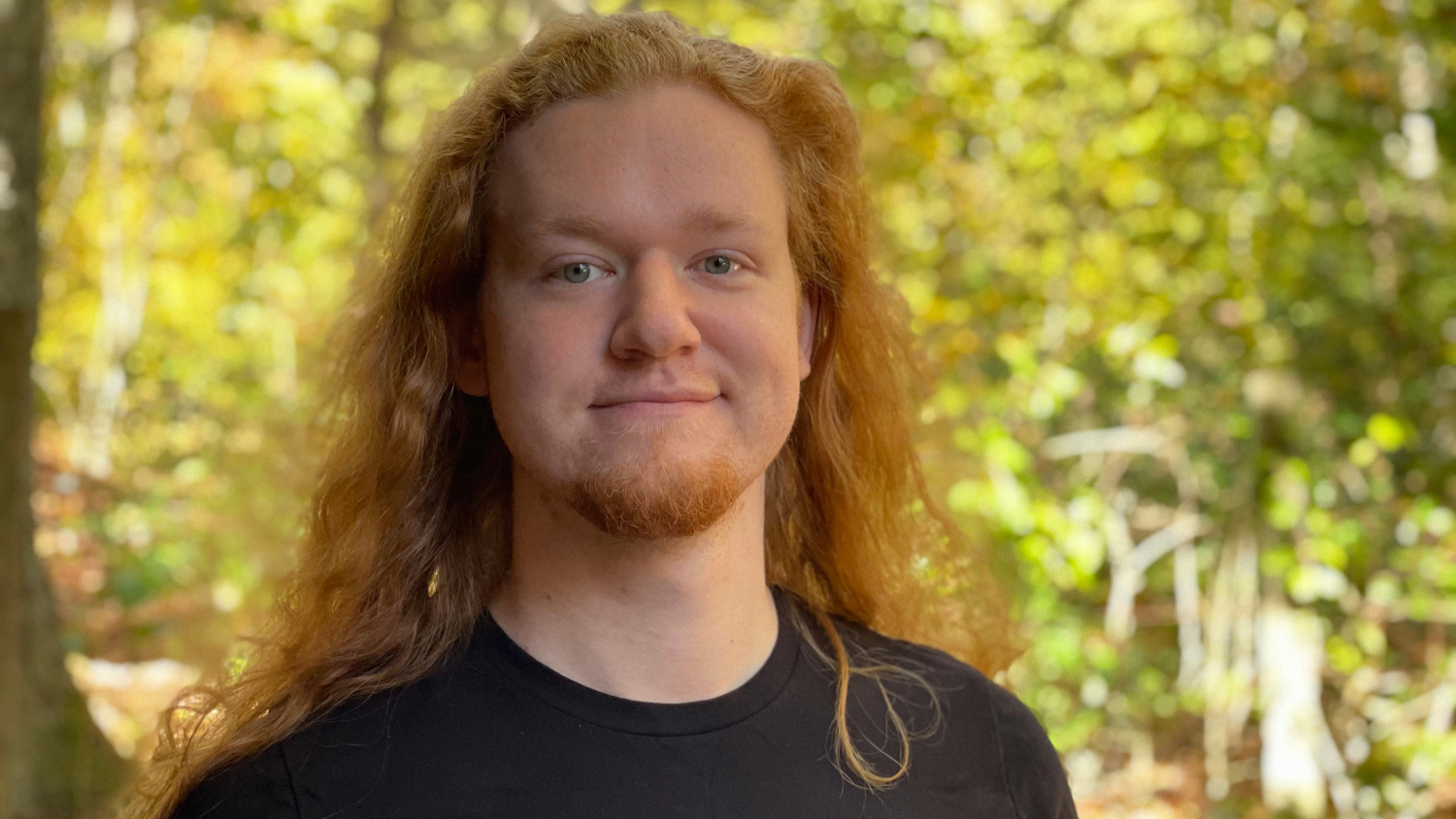
Andrew Wiedner almost never wears hats — they’re just not his thing (besides, why hide that hair?!).
But he enjoys wearing a variety of figurative hats: multimedia designer, storyteller, visual artist, musician, media consumer, tinkerer, creative.
Exploring the evolution of various media produced over the last several decades catalyzes his creativity hat. “I’m fascinated by the 20th century, which I only really experienced vicariously through music and traditional media, and which informs everything happening now in the 21st,” he said.
As a multimedia specialist for the Educational Media Design team at DELTA — his working professional hat — Wiedner flexes his design and illustrative muscles to help tell DELTA’s story through interactive, media-focused web applications, particularly for DELTA Grants projects.
“I spend a lot of time engaging with all kinds of media to mine every morsel of emotive content and human experience that I can from it,” he said. “On a very deep level I think of myself as a storyteller.”
What is your role with DELTA?
Wiedner joined DELTA part-time in 2017 as an undergraduate design student. He continued to work for DELTA through graduate school and accepted a full-time position in the summer of 2022.
“Basically, I’m a web developer,” he said. “During my time at DELTA I’ve created several interactive, media-focused web applications for course grants covering a wide variety of interesting subjects.”
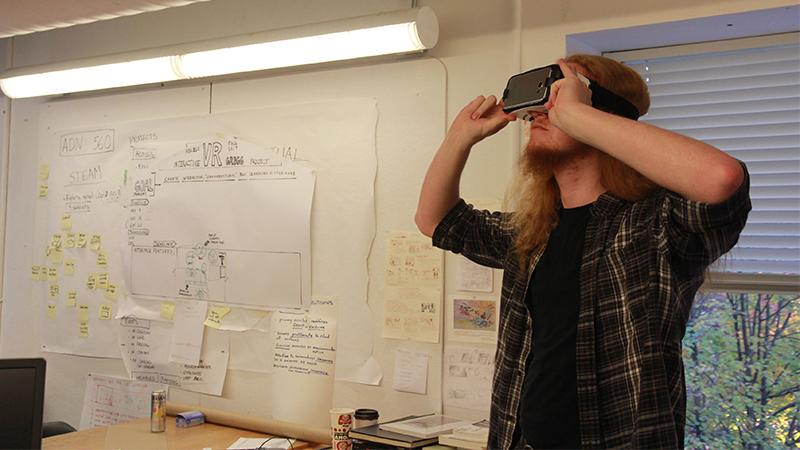
In addition to his media production work, Wiedner coordinates and delegates media needs for various grants projects. He also actively seeks opportunities to explore new educational technologies and interdisciplinary collaborations with other campus units.
This semester, his team is collaborating for a second time with the NC State Computer Science Department’s Senior Design Center to sponsor a team of students in the development of an editor for DELTA’s non-AI chatbot interface.
The project, Chatbot Branching Dialogue Conversation Editor, involves a chatbot prototype that simulates having contextualized conversations using human-authored dialogue. Wiedner previously worked with human-authored chatbots for graduate counseling students to practice pre-internship counseling skills.
“As much as possible we try to build experiences for students and faculty that give them the ability to engage with topics, click–drag–explode–rearrange, really dig in,” he said, “all through a website interface that they can access from anywhere they happen to be.”
Click–drag–explode–rearrange, he explained further, is his best attempt to creatively capture the way he would like the digital interactives he creates to feel.
“To provide a digital equivalent to hands-on learning or immersive engagement, some of the best digital experiences I’ve seen do a really good job of letting you “break apart” and play with the pieces of a place, thing or concept,” he said. “That’s what I’m trying to get at.”
What do you enjoy about your work?
Beyond the opportunity his work provides for creative exploration, Wiedner appreciates his colleagues. “All of the people I get to work with are super talented and interesting, which makes it fun to work alongside them,” he said. He also enjoys the team’s monthly lunch gatherings and other social outings, which build group cohesion and camaraderie.
Not one to shy away from a challenge, Wiedner is always up for attempting to recreate a cool graphic or element from a video game or mobile app for use in a web browser. Some of his favorite projects have been the Piano+ Interactive Piano Method Book app developed for an introductory keyboarding and performance course, and the interactive virtual environments developed for the NC State Feed Mill.
He particularly enjoys the opportunity to wear multiple creative hats at once creating graphics, animations and user interface (UI) design.
“By nature I’m a tinkerer and like to dabble in a lot of mediums,” he explained. “Rather than being a specialist in just one medium I like to integrate a variety of tools, techniques and technologies into what I create. In many industry jobs I feel like there would be more pressure to pick a lane and specialize, but at DELTA I’m always encouraged to pursue and incorporate new skills.”
What is your background?
A born-and-bred North Carolinian, Wiedner grew up in rural Siler City (population 8,074), in Chatham County. His youth included a steady diet of Scouting, comic books, creative endeavors, activities at his church and teaching himself to play various instruments.
Not quite content with the status quo in his small town, Wiedner looked for ways to express his unique identity. His long, bright-red hair offered one outlet. Already shaggy-headed by middle school, he started growing it out in earnest in high school.
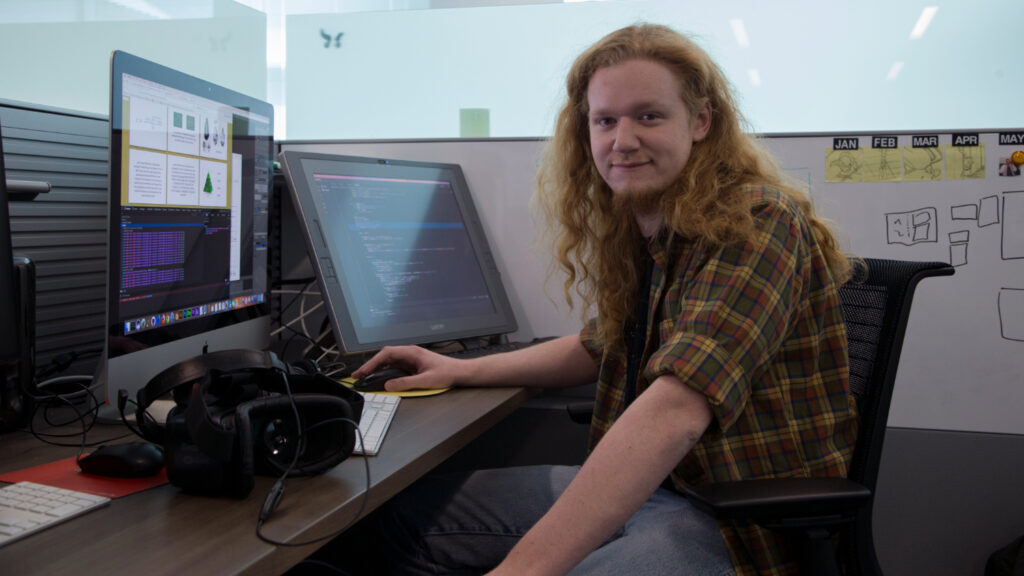
“My dad has long hair and so did a local independent artist mentor in my hometown and a “cool” guitar-playing guy from another troop at Boy Scout summer camp,” he explained. “And many of the musical artists I grew up listening to had long hair. So I guess in some ways it was derivative, but I quickly got bored with “normal” and my hair offered a way to be unique.”
Inspired by the same local artist mentor, who has a degree in graphic design from Appalachian State, after high school, Wiedner enrolled at NC State intending to study graphic design. Although the move to Raleigh was short in distance, it proved something of a culture shock.
“I found NC State and Raleigh to be super overwhelming when I first arrived,” he said. “So it’s weird and cool for it to feel kind of like home now. Once I found my niche, it all really grew on me.” He particularly enjoys the parks, restaurants and coffee shops in his neighborhood.
Back at NC State, Wiedner’s failure to pass the admissions review for the Graphic Design program derailed him — but only briefly. Landing instead in the Design Studies program in the College of Design, Wiedner forged his own program of study by combining non-studio history and theory courses with as many studio-based Art + Design courses as he could sneak in.
“Many of the studio majors THOUGHT I was one of them from the number of Art + Design courses I turned up in,” he laughed.
The result was a unique undergraduate experience that laid the foundation for Wiedner to progress into a Master of Art + Design degree, during which he worked on building out his portfolio and completing his thesis project — a browser-based meta-game about escapism and hyperreality.
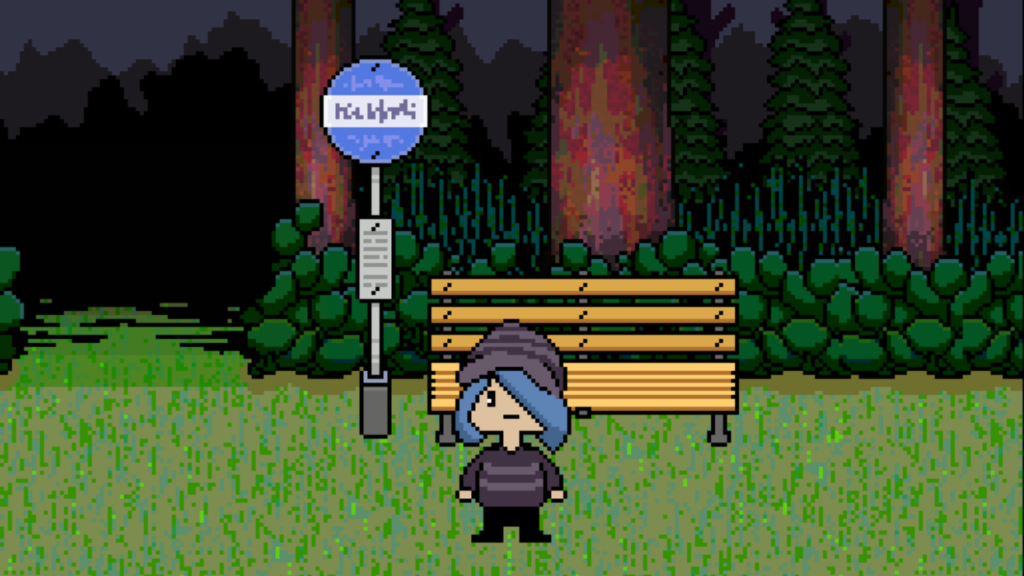
As a student, Wiedner had the good fortune to connect with a College of Design alumnus who put him in touch with Mike Cuales, Director of Digital Media Innovation at DELTA and a fellow Art + Design alum.
“My very first interaction with Mike was a timid, about-to-graduate networking email asking about his 360° video work at DELTA,” Wiedner said. “He invited me to come in for a chat and to share my projects and he was super down-to-earth and welcoming. He had a Cartoon Network coffee mug, so I knew this was probably a pretty cool place to work from the start.”
More than seven years later, it still is.
What is something people may not know about you?
Wiedner is a huge fan of manga, the Japanese comic and cartooning style popularized for Western audiences by series like Dragon Ball, Naruto and Akira, and with manga’s animated equivalent, anime.
“I grew up on manga and anime just as much as Western media,” he said. “I really appreciate Japanese aesthetic and culture, despite still being a novice in these subjects.”
He is particularly fond of Japanese animator and filmmaker Hayao Miyazaki, whose Studio Ghibli has produced the acclaimed films Spirited Away, Princess Mononoke and My Neighbor Totoro, among others. Wiedner discovered Miyazaki’s work as an undergrad, and “once I did I was hooked,” he said.

He continued, “There is something really inspiring to me that this often cynical man, clearly exhausted by woes of the 21st century, still finds the motivation to make these absolutely gorgeous and insightful animated films and pours himself into depicting a sort of defiant hope against the odds.”
Wiedner was so taken by Miyazaki’s work that he created a video essay about Miyazaki for his final project in ADN 491: Storytelling Through Films. The idea for it had been kicking around in Wiedner’s head for a couple years. Although the essay was supposed to be a class presentation, he received permission to make a video instead, and The Fantasy Worlds of Hayao Miyazaki was the result.
“I had wanted to create this project several times in different film classes, and it fell through at least twice before the video was made,” he said. “Pretty sure I got a good grade.”
What do you do in your spare time?
Wiedner has a lot of hobbies and interests, but music is… his jam.
As a kid, he taught himself to play piano by ear on a battery-operated toy piano, augmenting his nascent skills on the real pianos at his church. Without any formal training, piano was the most accessible instrument through which to develop his musicality.
“I would listen to some music and peck at the keys to find the same sounds,” he said.
In fourth grade, he saved up for a First Act electric guitar from Walmart and strummed enthusiastically for a while. It wasn’t until eighth grade, however, that he learned to play properly, following along to a VHS tape introducing basic guitar chords and style.
“I feel deeply connected to music through playing along.”
He’s picked up other instruments as the opportunities have presented themselves. “Musically, I come from a background of church hymns, classic rock, 2000s radio and film soundtracks,” he said.
After seeing a TV ad for fitness water that featured “Under Pressure” by Queen and David Bowie, Wiedner became enthralled by Bowie’s oeuvre (he was already a Queen fan, at least of their greatest hits, naturally). “That song, and seeing the trailer for Labyrinth, launched a fascination with Bowie’s music, stagecraft and voice that has influenced me ever since,” he explained.
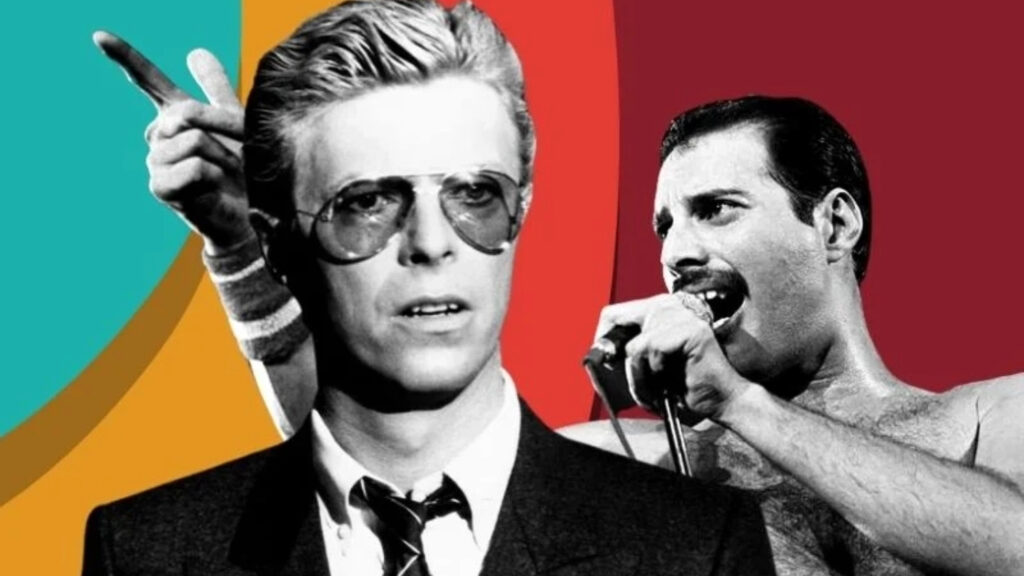
When he got to college, YouTube and Wikipedia opened the doors to Wiedner’s musical world even wider. “I was able to listen to tons more of the sounds of the 20th century that captured my interests, and learn about who made them, which really opened my eyes to the interconnectedness of musical influences across the decades and their wider historical contexts,” he said.
“It gave me a better appreciation for some of the music of my own generation, in a roundabout way, once I could see where it was coming from, and I realized that much of the substance was actually very similar.”
He’s gotten into live music in the area, but prefers small venues or outdoor festivals to big shows. “I love the idea of concerts, but the big ones tend to be too loud and crowded for me to engage with the music the way I prefer to.”
He still wears his musician hat, too: The bass line of the Chappell Roan song “Good Luck, Babe!” inspired him to get back into bass guitar. “I jam with college friends occasionally, and sometimes I play acoustic guitar on the worship team at my church here in Raleigh,” he said.
Deep engagement with music has allowed Wiedner, above all, to wear his storyteller hat — as both a creator and a receiver of stories and ideas that resonate with him.
“I like to absorb all these things and just let them clash in my mind and see where that goes,” he said. “When possible I turn these ideas into art, or music, or at least let them inform my creative process.”
“Ultimately,” he said, “I’m a collector of ideas.”
- Categories:


